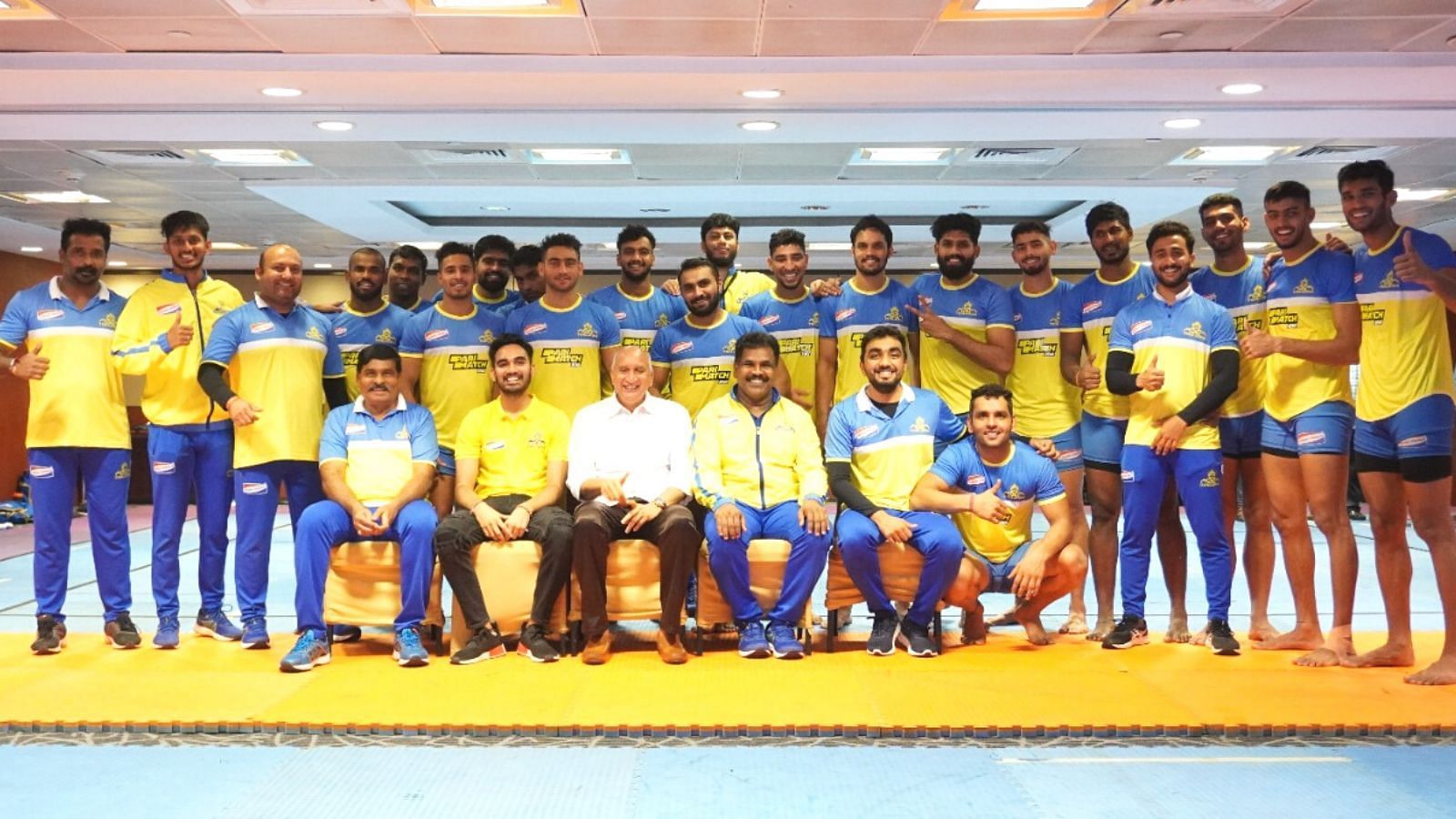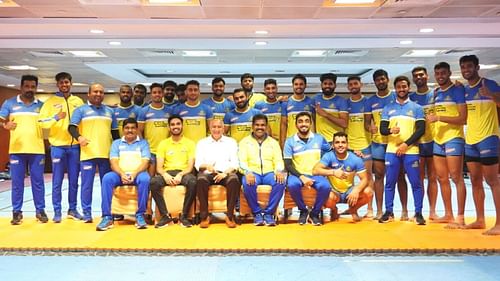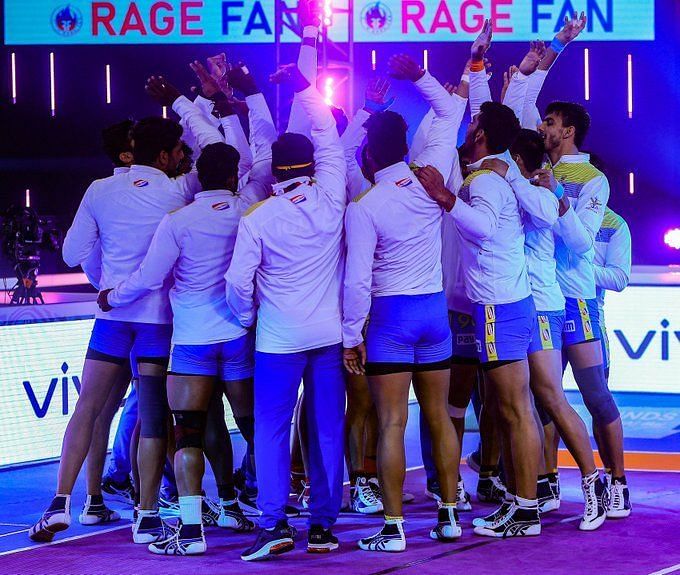
Is analytics really important in Kabaddi? Read details on how PKL changed the way analytics was looked at (Tamil Thalaivas POV)

We all know Virat Kohli knicks the ball behind which is outside off-stump. But did you know PKL’s star defender, Ravinder Pahal, The Hawk, is extremely poor with left raiders? He is not very good with ankle holds and dives, so he only goes for double thigh holds with right raiders. So, a team playing against Pahal can easily play left raiders and get points.
Similarly, Parvesh Bhainswal isn’t very good at dashing. He only goes for thigh holds and chain tackles. But how do we know all this? A layman watching the game can’t depict or analyze these points, and there comes the need for a professional video analyst.
When the Pro Kabaddi League kicked-off in 2014, it took the world by storm. The fan following of the sport, which went from mud to mat, was multiplied a number of times in a flash. But, when a sport gets the due attention, the other factors revolving around the sport also change.
Kabaddi is considered to be a "desi" sport in India, and the players mostly come from rural areas. With this, it’s evident that the sport and its players wouldn’t have been exposed to the use of technology. But the advent of PKL changed everything. Among all the major changes, the use of analytics in kabaddi is an exemplary story.
To understand what goes on behind the scenes and how analytics has evolved in Kabaddi over the years, Sportskeeda had an exclusive interview with the Team Analyst of Tamil Thalaivas, Adnan Siddique and the Team Manager, Abhi Varrier.
“Initially, the coaches were very skeptical about data and video. They didn’t consider it as anything useful. But now I am starting to see changes in their approach. Earlier, hardly any team had an analyst, but this season, every team has an analyst and they have video sessions”, said Adnan, the video analyst of Tamil Thalaivas, on being asked how PKL has evolved over the years.
“This season most of the senior players are not playing. The young players or players of this generation are accepting this with much enthusiasm. They have started making analysis an essential part of their playing style. Now, they have become more open but in the first few seasons they were very hesitant about analytics”, added Adnan.
Similarly, Abhi Varrier, who has been with six different coaches in his tenure in the PKL, says that, “So, if I recall Season 3, which was my first season, coaches were trying to adapt to video analysis. Back then, the coaches needed some proof to show the players what mistake they had made, and that is when they took it seriously. In season 5, I was also helping the video analyst at Puneri Paltan. In that phase, I had players like Cheralathan, Sandeep Narwal, Girish Ernak, who even after being so reputed and senior players were genuinely interested in knowing their mistakes”.
Describing an instance of one of India’s best defenders, Surjeet Singh, the current captain of Tamil Thalaivas, Abhi Warrier, says, “I have known Surjeet Singh since Season 3. He is someone who refuses to accept that he has made a mistake. This is only because of analysis that he started accepting his mistakes. When you become a senior player or a main player of the team, it becomes difficult for the coaches and analysts to make you understand that you are doing something wrong.”
“So, it is only through analysis that players have understood that they need to change their mindset. When they see their own mistakes in the video that is the time they realize they are making a mistake. But now the young players are coming from their side and saying, sir, I want to see the videos and analyze myself. I want to know where I went wrong, which was not the case before”, added the manager, who has been in PKL since Season 3.
Is analytics in Kabaddi different from what we have seen in Cricket and Football?
“It’s not different. It’s actually not possible for me to divulge into the details as we are in the middle of a season, but briefly speaking it is divided into two parts. One is for auction and scouting and the other is for during the season. Before the auction, we sit and watch matches of different players, whom we can buy in the auction. While during the tournament, there are some points where we are not doing well, so there comes my responsibility to find a solution to that”, opined the analyst from Mumbai.
“Suppose, we find from the data that we are not doing well in 6-7 defenses, so we watch the video where we are going wrong and along with the numbers find out the solution. So this is one instance where data and numbers work side-by-side. We also have pre-match and post-match sessions. It’s not compulsory but mostly talking about our team, we have sessions regularly”, added Adnan.
Importance of coordination with coach
Adnan says that coaches have special sessions with analysts to find out the mistakes of players that they committed during the match and talk to them in the practice sessions. Similarly, players watch videos, they see the data and then they talk with the coaches on how to improve themselves.
“To be very honest, both players and coaches hardly believed that analysis has any value, because they hadn’t done that all their life. So when someone suddenly comes and says that you are bad at a particular thing, it will obviously take some time for them to accept”, said Adnan, who has been with Thalaivas for the last three seasons.
When asked if his analysis has ever backfired for the team, Adnan said, “It has backfired in 2-3 instances when a raider was asked to do one thing but the opponent’s tackle came out of the syllabus. There are some instances which data can’t help. But, in most cases it works.”
We all know most of the players come from rural areas, so it must have been difficult for them to adapt to technology. Adnan also had the same views on this. He said, “To be very honest, both players and coaches hardly believed that analysis has any value, because they hadn’t done that all their life. So when someone suddenly comes and says, you are bad at a particular thing, it will obviously take some time for them to accept.”
Players who have gotten addicted to analytics
“For a change, Captain Surjeet Singh has become the most active player who relies on analytics a lot. There are a few more too, Sagar, Manjeet Chillar, Ajinkya Pawar; all these people spend a lot of time analyzing their mistakes and reading their opponents”, said Adnan.
Pathway for someone to be an Analyst
The lad from Mumbai feels that data and analysis without context is meaningless. He also gives one example of the same.
“There was a player in Pune in Season 5 named Suresh Kumar. 15-20 times he came on as a substitute when the team was down to one or two, and he used to take bonus points and return. He did that consistently for the entire season. A new analyst working with them found out that this guy is very good at taking bonuses, but he was missing the context that the opponents were allowing him to take bonus, as they had just 1-2 players in their court. It was a mind game that the other team was playing which the analyst missed”, explained Adnan.
To be an analyst, you need to be very good with numbers, context, familiar with the terms of the sport, game sense, knowing salient rules of the game, and most importantly should be passionate about sports.
Changes you can expect to see in the future in the PKL
“Before 2014, no one used analytics in Kabaddi. But it has only been eight years and it has become an integral part of every player and coach. There are going to be more innovations for sure, and the scope will also increase in the future”, said Adnan.
With Kabaddi being a very physical sport and the role of fitness being paramount, Abhi feels that the players have gained more expertise in fitness. They are more focused on keeping themselves fit.
“For instance, Surjeet, our captain, doesn’t eat sweets a day before the match because he believes that eating sweets will slow his body down. It’s actually great to see players getting educated by playing in the league. And, this will only improve in near future”, said Abhi.
Work during the off-season
Team managers, coaches and analysts work round the year scouting players. They see hundreds of matches to find the right players for their team. They travel to different domestic tournaments and scout players from there.
“Our coach Uday Sir is a very big fan of analytics. He keeps on seeing videos of players and analyzes their mistakes. This year has been a dream season for us. We worked hard to scout players even during the covid, and that is the result you are seeing today. Sagar, who was warming the benches last season, has the highest tackle points this season. So, obviously that’s a very big achievement for us. With our current performance and the kind of team we have, we are hopeful that this time we will be lifting the trophy”, concluded the team manager.
